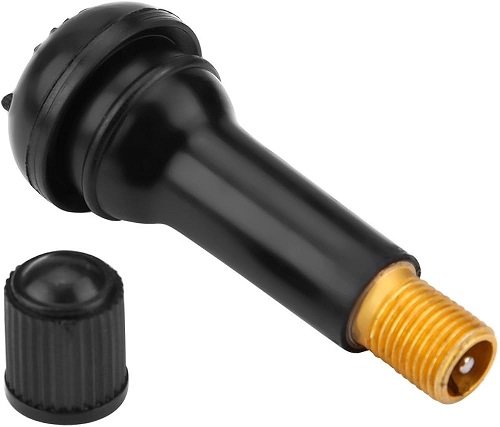
Choosing the right material for tire valves depends on several factors, including the type of vehicle, driving conditions, performance requirements, and cost considerations. Here are the key materials used for tire valves and their selection criteria:
1. Rubber Tire Valves (TR413, TR414, etc.)
- Material: brass stem, natural rubber or EPDM rubber
- zinc stem, natural rubber or EPDM rubber
- aluminium stem, natural rubber or EPDM rubber
- Best for: Standard passenger cars, low-speed applications.
- Pros:
- Flexible and lightweight.
- Cost-effective.
- Corrosion-resistant (rubber protects the stem).
- Cons:
- Less durable at high speeds (can deform over time).
- Not suitable for high-pressure or high-performance applications.
- Typical Use: Everyday vehicles, sedans, and light trucks.
2. Metal Tire Valves (Aluminum, Brass, or Stainless Steel)
- Material: Aluminum, brass, or stainless steel.
- Best for: High-performance cars, trucks, off-road vehicles, and racing applications.
- Pros:
- Extremely durable and resistant to heat/cold.
- Can handle high pressure and high speeds without deformation.
- Brass and stainless steel offer excellent corrosion resistance.
- Cons:
- More expensive than rubber valves.
- Can corrode if not properly coated (especially aluminum in salty conditions).
- Typical Use:
- Aluminum: Lightweight performance cars, motorcycles.
- Brass: Heavy-duty trucks, commercial vehicles (better corrosion resistance).
- Stainless Steel: Extreme conditions (off-road, marine, winter driving).
3. Snap-in vs. Clamp-in Valves
- Snap-in (Rubber):
- Easy to install, used mostly for passenger cars.
- Limited to lower pressure (usually under 65 PSI).
- Clamp-in (Metal):
- Requires a nut and washer for secure mounting.
- Handles higher pressures (up to 200 PSI for heavy-duty trucks).
4. TPMS (Tire Pressure Monitoring System) Valves
- Material: Usually aluminum or stainless steel for durability.
- Best for: Modern cars with TPMS sensors.
- Pros:
- Ensures accurate pressure monitoring.
- More secure than rubber valves.
- Cons:
- Expensive to replace.
- Requires proper sealing to prevent leaks.
Key Selection Factors:
- Vehicle Type:
- Passenger cars: Rubber or basic metal valves.
- SUVs/Trucks: Brass or stainless steel clamp-in valves.
- Racing/Performance: Aluminum or high-temp metal valves.
- Driving Conditions:
- Winter/Salty roads: Stainless steel or coated brass.
- Off-road: Heavy-duty metal valves.
- Speed & Pressure Requirements:
- High-speed (>100 mph) or high-pressure (heavy trucks) need metal valves.
- Cost vs. Longevity:
- Rubber is cheap but less durable; metal lasts longer but costs more.
Final Recommendation:
- Daily Drivers: Rubber snap-in valves (TR413/TR414).
- Performance Cars/Trucks: Aluminum or brass clamp-in valves.
- Extreme Conditions (Off-road/Winter): Stainless steel valves.
Would you like recommendations for a specific vehicle type?
